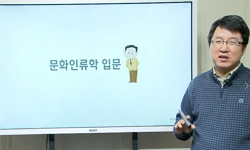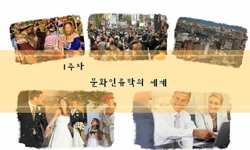해방 후 한국사학계는 일제잔재를 청산하고 새로운 역사학을 건설하려는 의지로 충만하였다. “국내 역사학의 새로운 건설”을 기치로 역사학회가 창립되었고, 김철준은 그 주동적인 역할...
http://chineseinput.net/에서 pinyin(병음)방식으로 중국어를 변환할 수 있습니다.
변환된 중국어를 복사하여 사용하시면 됩니다.
- 中文 을 입력하시려면 zhongwen을 입력하시고 space를누르시면됩니다.
- 北京 을 입력하시려면 beijing을 입력하시고 space를 누르시면 됩니다.
https://www.riss.kr/link?id=A76361624
- 저자
- 발행기관
- 학술지명
- 권호사항
-
발행연도
2009
-
작성언어
Korean
- 주제어
-
등재정보
KCI등재
-
자료형태
학술저널
- 발행기관 URL
-
수록면
47-79(33쪽)
-
KCI 피인용횟수
2
- 제공처
- 소장기관
-
0
상세조회 -
0
다운로드
부가정보
국문 초록 (Abstract)
그가 한국고대사연구에 남긴 최대의 업적은 한국고대사의 체계화였다. 1964년에 저술한 「한국고대국가발달사」는 해방 후 새로운 시각으로 쓴 한국 고대사 개설서였다. 동시에 해방 후 첫 세대 학자가 쓴 한국고대사 개설서의 시초였다. 이는 일제 식민주의 사관에서 벗어나 우리나라 고대국가의 형성과 발달과정을 이해하는 기준을 세웠다는 점에서 중요하다.
그러나 그의 주요 연구들은 충분한 실증과 분석에 의한 결과가 아니었다. 직관적인 해석과 인류학 이론에 바탕을 둔 가설로 제시되었기 때문에, 방법의 참신성에도 불구하고 영향력이 오래 미치지 못하였다. 시간이 흐르면서 그의 주장들은 연구자들의 비판에 직면하였다. 삶의 후반기 그는 대외적인 활동에 깊이 관여하였고, 학회 활동과는 거리가 멀어져 있었다.
해방 후 월남하여 거의 평생을 독신으로 지낸 그는 한 편의 드라마 같은 삶을 살다간 고독한 역사가였다. 그는 자신의 이력에 관한 글을 남기지 않았고, 가족사는 잘 밝혀져 있지 않다. 그러나 한국고대사학의 개척기, 그는 연구의 지평을 넓히려 애썼던 시대를 앞서간 선각자였다. 해방 후 한국고대사학계가 이룬 많은 연구 성과의 결실은 그의 문제 제기에서 비롯된 것이 적지 않았다. 우리는 이러한 선학이 있음으로 해서 역사학의 방법론에 대한 인식을 넓히고, 한국고대사의 체계화에 대한 기준을 세울 수 있었다. 또한 실증에 앞서 선험적 이론에 입각한 가설적인 연구는 역사의 실제와 거리가 있다는 사실도 확인할 수 있었다.
해방 후 한국사학계는 일제잔재를 청산하고 새로운 역사학을 건설하려는 의지로 충만하였다. “국내 역사학의 새로운 건설”을 기치로 역사학회가 창립되었고, 김철준은 그 주동적인 역할을 담당하였다. 그는 일찍부터 문헌고증학적 역사학의 한계를 극복하고 고대사연구의 지평을 넓힐 수 있는 방안을 모색하였다. 그는 특히 인류학적 지식을 원용하여 한국고대사의 문제들을 해명하려 시도하였다.
그가 한국고대사연구에 남긴 최대의 업적은 한국고대사의 체계화였다. 1964년에 저술한 「한국고대국가발달사」는 해방 후 새로운 시각으로 쓴 한국 고대사 개설서였다. 동시에 해방 후 첫 세대 학자가 쓴 한국고대사 개설서의 시초였다. 이는 일제 식민주의 사관에서 벗어나 우리나라 고대국가의 형성과 발달과정을 이해하는 기준을 세웠다는 점에서 중요하다.
그러나 그의 주요 연구들은 충분한 실증과 분석에 의한 결과가 아니었다. 직관적인 해석과 인류학 이론에 바탕을 둔 가설로 제시되었기 때문에, 방법의 참신성에도 불구하고 영향력이 오래 미치지 못하였다. 시간이 흐르면서 그의 주장들은 연구자들의 비판에 직면하였다. 삶의 후반기 그는 대외적인 활동에 깊이 관여하였고, 학회 활동과는 거리가 멀어져 있었다.
해방 후 월남하여 거의 평생을 독신으로 지낸 그는 한 편의 드라마 같은 삶을 살다간 고독한 역사가였다. 그는 자신의 이력에 관한 글을 남기지 않았고, 가족사는 잘 밝혀져 있지 않다. 그러나 한국고대사학의 개척기, 그는 연구의 지평을 넓히려 애썼던 시대를 앞서간 선각자였다. 해방 후 한국고대사학계가 이룬 많은 연구 성과의 결실은 그의 문제 제기에서 비롯된 것이 적지 않았다. 우리는 이러한 선학이 있음으로 해서 역사학의 방법론에 대한 인식을 넓히고, 한국고대사의 체계화에 대한 기준을 세울 수 있었다. 또한 실증에 앞서 선험적 이론에 입각한 가설적인 연구는 역사의 실제와 거리가 있다는 사실도 확인할 수 있었다.
다국어 초록 (Multilingual Abstract)
The greatest academic achievement that Kim left was the systematization of ancient Korean history. His work entitled History of Development of Ancient Korean States, appeared in 1964, was an outline of ancient Korean history, which was written in a new viewpoint after liberation. It was also the first work of the sort written by the first-generation Korean historian after liberation. The book is important, since it established a standard to understand formation and growth of Korea’s ancient states, breaking from the existing Japanese colonial view of history.
But Kim’s major works were not a product of sufficient corroborative evidence and analyses. Since they appeared as hypotheses based on intuitive interpretations and anthropological theories, despite methodological novelty their influence was not sustaining. As time went by, his contentions were subject to criticism on the part of other scholars. In the latter part of his life, he deeply engaged in non-scholastic activities, and therefore he was alienated from the academic world.
Kim Chol-choon, who moved south as a North Korean refugee after liberation and remained single almost for life, was a lonely historian, leading a dramatic life. He did not leave any writing on his own personal record, and therefore his family history is clearly brought to light. He was obviously a pioneer who tried to broaden the scope of Korean history in the initial stage of the study of ancient Korean history. In fact, a great deal of achievements in ancient Korean history realized after liberation have owed much to his raising of questions. The existence of pioneer scholars such as Kim Chol-choon leads us to broaden epistemological understanding of history and establish a standard to systematize ancient Korean history. Also, it is obvious that hypothetical studies based on a priori theories rather than actual proofs do not substantiate actual historical facts.
After liberation in 1945, the Korean learned circles of history were full of willingness to liquidate vestiges of Japanese colonial rule and to establish new historical study. As a result, the Korean Historical Association was formed under the banner ...
After liberation in 1945, the Korean learned circles of history were full of willingness to liquidate vestiges of Japanese colonial rule and to establish new historical study. As a result, the Korean Historical Association was formed under the banner of "new establishment of Korean historical study," and Kim Chol-choon took the lead of it. From early times on, Kim sought ways to overcome the limits of the study of history based on bibliographical study and extend its scope. In particular, he tried to explicate difficult problems in ancient Korean history by using the anthropological knowledge and methodology.
The greatest academic achievement that Kim left was the systematization of ancient Korean history. His work entitled History of Development of Ancient Korean States, appeared in 1964, was an outline of ancient Korean history, which was written in a new viewpoint after liberation. It was also the first work of the sort written by the first-generation Korean historian after liberation. The book is important, since it established a standard to understand formation and growth of Korea’s ancient states, breaking from the existing Japanese colonial view of history.
But Kim’s major works were not a product of sufficient corroborative evidence and analyses. Since they appeared as hypotheses based on intuitive interpretations and anthropological theories, despite methodological novelty their influence was not sustaining. As time went by, his contentions were subject to criticism on the part of other scholars. In the latter part of his life, he deeply engaged in non-scholastic activities, and therefore he was alienated from the academic world.
Kim Chol-choon, who moved south as a North Korean refugee after liberation and remained single almost for life, was a lonely historian, leading a dramatic life. He did not leave any writing on his own personal record, and therefore his family history is clearly brought to light. He was obviously a pioneer who tried to broaden the scope of Korean history in the initial stage of the study of ancient Korean history. In fact, a great deal of achievements in ancient Korean history realized after liberation have owed much to his raising of questions. The existence of pioneer scholars such as Kim Chol-choon leads us to broaden epistemological understanding of history and establish a standard to systematize ancient Korean history. Also, it is obvious that hypothetical studies based on a priori theories rather than actual proofs do not substantiate actual historical facts.
목차 (Table of Contents)
- 국문초록
- Ⅰ. 머리말
- Ⅱ. 출생과 성장
- Ⅲ. 새로운 방법론을 찾아서
- Ⅳ. 한국고대사의 체계화
- 국문초록
- Ⅰ. 머리말
- Ⅱ. 출생과 성장
- Ⅲ. 새로운 방법론을 찾아서
- Ⅳ. 한국고대사의 체계화
- Ⅴ. 후반의 삶과 학문
- Ⅵ. 맺음말
- 참고문헌
- Abstract
참고문헌 (Reference)
1 김성준, "歷史와 回顧" 국학자료원 1997
2 李基白, "歷史學會의 어제와 오늘" 99 : 1983
3 李普珩, "歷史學會 創立當時를 回顧하며" 座談會 75 : 1977
4 金哲埈博士華甲紀念史學論叢刊行委員會, "金哲埈博士華甲紀念史學論叢" 知識産業社 1983
5 제칠일안식일예수재림교 한국연합회, "한국선교 80주년 기념사진첩" 시조사 1985
6 한국민족문화대백과사전편찬부, "한국민족문화대백과사전" 한국정신문화연구원 1991
7 한영우, "역사학의 역사" 지식산업사 2002
8 김두진, "신라하대 선종사상사 연구" 일조각 2007
9 김재신, "삼육대학교 90년사(1906~1996)" 삼육대학교 1998
10 "문화일보 1997.5.14일자"
1 김성준, "歷史와 回顧" 국학자료원 1997
2 李基白, "歷史學會의 어제와 오늘" 99 : 1983
3 李普珩, "歷史學會 創立當時를 回顧하며" 座談會 75 : 1977
4 金哲埈博士華甲紀念史學論叢刊行委員會, "金哲埈博士華甲紀念史學論叢" 知識産業社 1983
5 제칠일안식일예수재림교 한국연합회, "한국선교 80주년 기념사진첩" 시조사 1985
6 한국민족문화대백과사전편찬부, "한국민족문화대백과사전" 한국정신문화연구원 1991
7 한영우, "역사학의 역사" 지식산업사 2002
8 김두진, "신라하대 선종사상사 연구" 일조각 2007
9 김재신, "삼육대학교 90년사(1906~1996)" 삼육대학교 1998
10 "문화일보 1997.5.14일자"
11 이기동, "내가 본 新羅史 연구의 世界" 신라사학회 13 (13): 257-295, 2008
12 金乙漢, "그리운 사람들" 三中堂 1961
13 하일식, "고대사연구의 주요 쟁점과 과제 in : 한국사연구 50년" 혜안 2005
14 李基東, "고대 in : 한국의 학술연구" 대한민국학술원 2006
15 이한우, "거대한 생애 이승만 90년(상)" 朝鮮日報社 1995
16 李佑成, "韓國의 歷史像" 創作과 批評社 1982
17 金哲埈, "韓國文化史論" 서울대학교출판부 1990
18 서울大學校 人文大學 國史學科, "韓國史論41ㆍ42합집(一溪 金哲埈先生10週忌追慕論叢)" 1999
19 서울大學校 人文大學 國史學科, "韓國史論19 (金哲埈博士停年記念號)" 1992
20 李基白, "韓國史新論" 一朝閣 1967
21 李基白, "韓國史新論" 一朝閣 1976
22 金哲埈, "韓國史學史硏究" 서울대학교출판부 1990
23 金哲埈, "韓國古代社會硏究" 서울대학교출판부 1990
24 金哲埈, "韓國古代史硏究" 서울대학교출판부 1990
25 李榮麟, "韓國再臨敎會史硏究" 宣明文化社 1968
26 金在信, "第七日安息日예수 再臨敎會 北韓敎會史" 時兆社 1994
27 "東亞日報 1936.3.31일자, 1946.7.12일자, 1949.6.18일자, 1949.9.6일자, 1951.7.18일자, 1951.8.15일자."
28 "朝鮮日報 1937.7.8일자, 1997.5.14일자"
29 武田幸男, "新羅骨品制の再檢討" 67 : 1975
30 李基東, "新羅 骨品制社會와 花郞徒" 韓國硏究院 1980
31 윤호근, "恨半島-아시아 최초의 ‘뉴욕타임스’ 특파원 윤호근의 외교 반세기-" 을유문화사 2005
32 "大韓民國人事錄" 內外弘報社 1949
33 金杜珍, "均如華嚴思想硏究" 韓國硏究院 1981
34 "唐岳金氏在南族譜" 1976
35 金乙漢, "人間 李垠-解放에서 還國까지-" 韓國日報社 1971
36 崔柄憲, "一溪 金埈 先生의 삶과 學問 in : 앞서 가신 회원의 발자취" 대한민국학술원 2004
37 "http://myeolgong.net/zbxe/941"
38 "http://ja.wikipedia.org/wiki/洛南高等学校"
39 邊太燮, "1968년도 한국사학계 회고와 전망(국사 고대)" 44 : 1969
동일학술지(권/호) 다른 논문
-
- 한국고대사학회
- 文昌魯(Moon Chang-rho)
- 2009
- KCI등재
-
- 한국고대사학회
- 전덕재(Jeon Deog-jae)
- 2009
- KCI등재
-
- 한국고대사학회
- 權五重(Kwon O-jung)
- 2009
- KCI등재
-
4세기 高句麗의 樂浪ㆍ帶方 경영과 中國系 亡命人의 정체성 인식
- 한국고대사학회
- 余昊奎(Yeo Ho-kyu)
- 2009
- KCI등재
분석정보
인용정보 인용지수 설명보기
학술지 이력
| 연월일 | 이력구분 | 이력상세 | 등재구분 |
|---|---|---|---|
| 2026 | 평가예정 | 재인증평가 신청대상 (재인증) | |
| 2020-01-01 | 평가 | 등재학술지 유지 (재인증) |  |
| 2017-01-01 | 평가 | 등재학술지 유지 (계속평가) |  |
| 2013-01-01 | 평가 | 등재학술지 유지 (등재유지) |  |
| 2010-01-01 | 평가 | 등재학술지 유지 (등재유지) |  |
| 2008-07-07 | 학회명변경 | 영문명 : The Korean Ancient Historical Association -> The Society for Ancient Korean History |  |
| 2008-01-01 | 평가 | 등재학술지 유지 (등재유지) |  |
| 2005-01-01 | 평가 | 등재학술지 선정 (등재후보2차) |  |
| 2004-01-01 | 평가 | 등재후보 1차 PASS (등재후보1차) |  |
| 2002-01-01 | 평가 | 등재후보학술지 선정 (신규평가) |  |
학술지 인용정보
| 기준연도 | WOS-KCI 통합IF(2년) | KCIF(2년) | KCIF(3년) |
|---|---|---|---|
| 2016 | 1.69 | 1.69 | 1.84 |
| KCIF(4년) | KCIF(5년) | 중심성지수(3년) | 즉시성지수 |
| 1.64 | 1.57 | 3.463 | 0.17 |




 DBpia
DBpia







